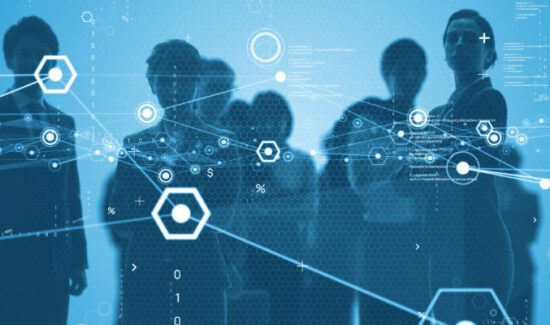Breaking Down Silos: Why HR and IT Must Unite on AI Strategy

The Solutions Review editors outline why HR and IT departments must collaborate on their AI strategy to ensure its success. This examination was inspired by our recent Solutions Spotlight virtual session with the Senior Directors of HR and IT from G-P.
The artificial intelligence revolution has created an unprecedented organizational paradox: the technologies most likely to transform workforce productivity are also those most likely to fragment organizational decision-making. While IT departments rush to implement AI infrastructure and HR teams struggle with workforce transformation, the absence of a unified strategy creates significant blind spots that no single department can address independently.
The traditional model of departmental autonomy becomes a liability when AI touches every aspect of human capital management. From algorithmic hiring decisions to performance evaluation systems, implementing AI requires a simultaneous technical sophistication and a deep understanding of human dynamics. Organizations that maintain rigid silos between HR and IT will find themselves navigating regulatory complexity with incomplete information and implementing solutions that satisfy neither technical requirements nor human needs.
“The biggest hurdle in AI adoption isn’t the technology, but the trust gap. For IT, the goal is to be a strategic partner to HR from the very beginning, ensuring any AI tool is built on a foundation of secure, reliable data. When we break down those silos to build that trust, that’s when real innovation can happen,” says Maria Lees, the Senior Director of Enterprise IT at G-P.
The stakes extend beyond operational efficiency. AI governance failures can trigger cascading consequences across legal, reputational, and competitive dimensions. When HR lacks visibility into AI technical architectures, they cannot adequately assess the risks of bias or compliance implications. When IT lacks insight into workforce dynamics and regulatory requirements, it builds systems that create legal exposure or employee alienation.
If we look ahead, it seems likely that organizations will begin developing hybrid roles specifically focused on integrating AI into the workforce, combining technical and human resource expertise. These roles will become essential as AI systems become more sophisticated and their impact on workforce dynamics becomes more pronounced. The more collaborative HR and IT departments are, the easier it will be for them to integrate these new roles and processes into their organization.
The Global Compliance Challenges HR Teams Face
Human resources departments face a regulatory landscape that evolves more rapidly than their ability to develop expertise in response. For example, the European Union’s AI Act establishes classification requirements for high-risk AI systems, which directly impact recruitment, promotion, and performance management. California’s emerging algorithmic accountability legislation will also demand transparency in automated decision-making processes. Meanwhile, sector-specific regulations in healthcare, finance, and government create additional compliance layers that HR teams must navigate without a comprehensive technical understanding of these regulations.
The complexity deepens when considering cross-border operations. A multinational corporation might face GDPR requirements in Europe, varying state-level AI regulations in the United States, and emerging frameworks in Asia-Pacific markets. HR teams, traditionally focused on employment law, suddenly need expertise in algorithmic transparency, data processing agreements, and technical auditing requirements to remain informed and compliant.
To make things even more complicated, traditional HR compliance frameworks often prove inadequate for AI governance. Employment law focuses on outcomes and discriminatory impact, while AI regulation increasingly examines process and algorithmic design. HR professionals need to evaluate not just whether an AI hiring tool produces biased results, but whether its training data, feature selection, and model architecture create inherent bias risks. This technical evaluation requires capabilities that most HR departments lack.
The documentation burden alone represents a significant challenge. AI compliance often requires maintaining detailed records of model training, data sources, algorithmic decision pathways, and ongoing performance monitoring. HR teams accustomed to managing employee records and policy documentation must now maintain technical documentation that requires an understanding of machine learning concepts and data governance practices.
Unlike traditional HR policies that remain relatively stable, AI systems continuously learn and evolve. Compliance frameworks must account for model drift, where the behavior of AI changes over time without explicit programming modifications. HR teams need ongoing monitoring capabilities that can detect when compliant systems become non-compliant through automated learning processes. International regulatory fragmentation means that organizations cannot rely on a single compliance strategy, and different markets may prioritize other aspects of AI governance, creating situations where compliance in one jurisdiction creates compliance risks in another.
Ways IT Can Build Trust in AI Solutions
Information technology departments must fundamentally reconceptualize their relationship with HR stakeholders when implementing AI solutions. Traditional IT approaches that prioritize technical functionality over user experience often fail catastrophically in HR contexts, where trust and transparency have a direct impact on employee engagement and compliance with legal requirements.
Technical architecture decisions have profound implications for HR operations that IT teams often overlook. Model interpretability becomes crucial not just for regulatory compliance but for HR professionals who need to explain algorithmic decisions to employees, managers, and legal counsel. IT teams that optimize purely for predictive accuracy without considering explainability create systems that HR cannot effectively defend or justify.
Data governance represents a critical trust-building opportunity that IT departments frequently underutilize. HR teams need a granular understanding of what data feeds AI systems, how that data gets processed, and what safeguards prevent inappropriate use. IT teams that treat data governance as purely technical documentation miss opportunities to build HR confidence through transparent communication about data handling practices.
Additionally, the concept of algorithmic auditability requires IT departments to design systems with built-in HR oversight capabilities, integrated into the architecture. This involves creating interfaces that enable HR professionals to analyze algorithmic decision-making patterns, identify potential bias indicators, and generate reports for compliance purposes. IT teams that view these capabilities as secondary features rather than core requirements create systems that HR cannot trust or effectively manage.
As regulatory requirements intensify, AI systems are likely to incorporate mandatory auditability features. Organizations that proactively develop these capabilities will have a significant advantage over those that retrofit auditing onto existing systems.
How Collaboration is Key to Implementing AI Tools
The timing of collaboration proves crucial for the success of implementation. Organizations that engage HR teams only after IT has selected and configured AI tools consistently encounter resistance, compliance issues, and user adoption problems. Successful implementations begin with joint requirement gathering that identifies both technical capabilities and HR operational needs from the earliest planning stages. One way to achieve this is by prioritizing an “empathetic” approach to AI implementation, which embeds human principles, such as transparency, fairness, and accountability, into every stage of the AI lifecycle. This can help bridge the gap between departments and ensure employees are on board with the entire AI strategy, from the conceptual phase to deployment.
Organizations will likely develop specialized AI governance roles that combine technical and HR expertise, similar to how privacy officers emerged to address GDPR requirements. These roles can help teams create change management strategies for AI implementation that address both technical adoption and cultural transformation simultaneously. This will be a crucial stage of the implementation, as IT and HR teams often have different strengths and weaknesses that both require consideration and accommodation.
The feedback loop between HR and IT will remain crucial for the ongoing optimization of the AI system as well. For instance, HR teams can observe the human impact of AI decisions and identify patterns that purely technical monitoring might miss. In parallel, IT teams adjust system parameters based on HR feedback to improve both technical performance and human experience.
“What’s exciting is that leveraging AI can allow HR professionals to be more human. We’re finally able to step out of the admin weeds and focus on strategy, coaching, and culture. When IT gives us a solid, secure foundation, we can confidently use AI to build better, fairer, and more meaningful work experiences for everyone,” says Connie Diaz, Senior Director of HR at G-P.
The evolution toward a truly integrated AI strategy requires organizational commitment that extends beyond individual implementations to a comprehensive transformation of how HR and IT departments collaborate. Organizations that treat AI as a purely technical implementation consistently achieve suboptimal results compared to those that recognize AI as fundamentally transformative technology requiring new forms of cross-departmental cooperation.
For an even deeper look into how HR and IT teams can collaborate on AI strategy, check out the Solutions Spotlight webinar with G-P on YouTube.




